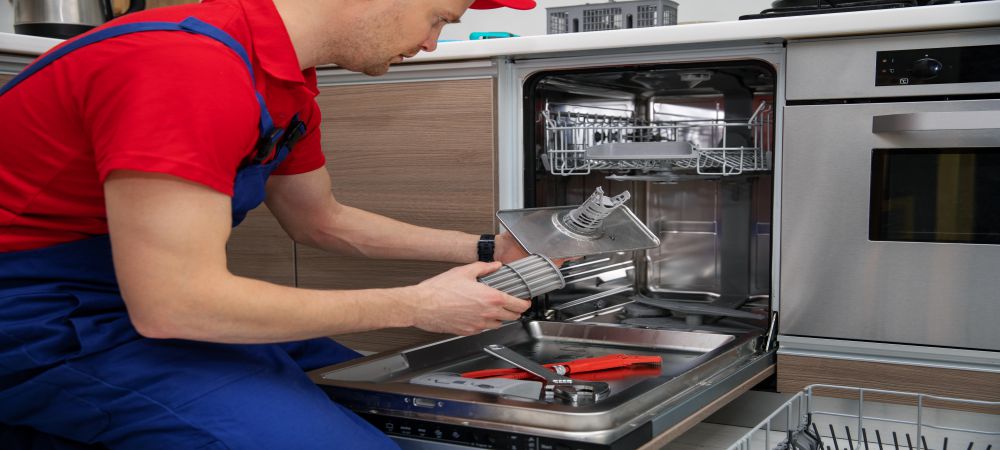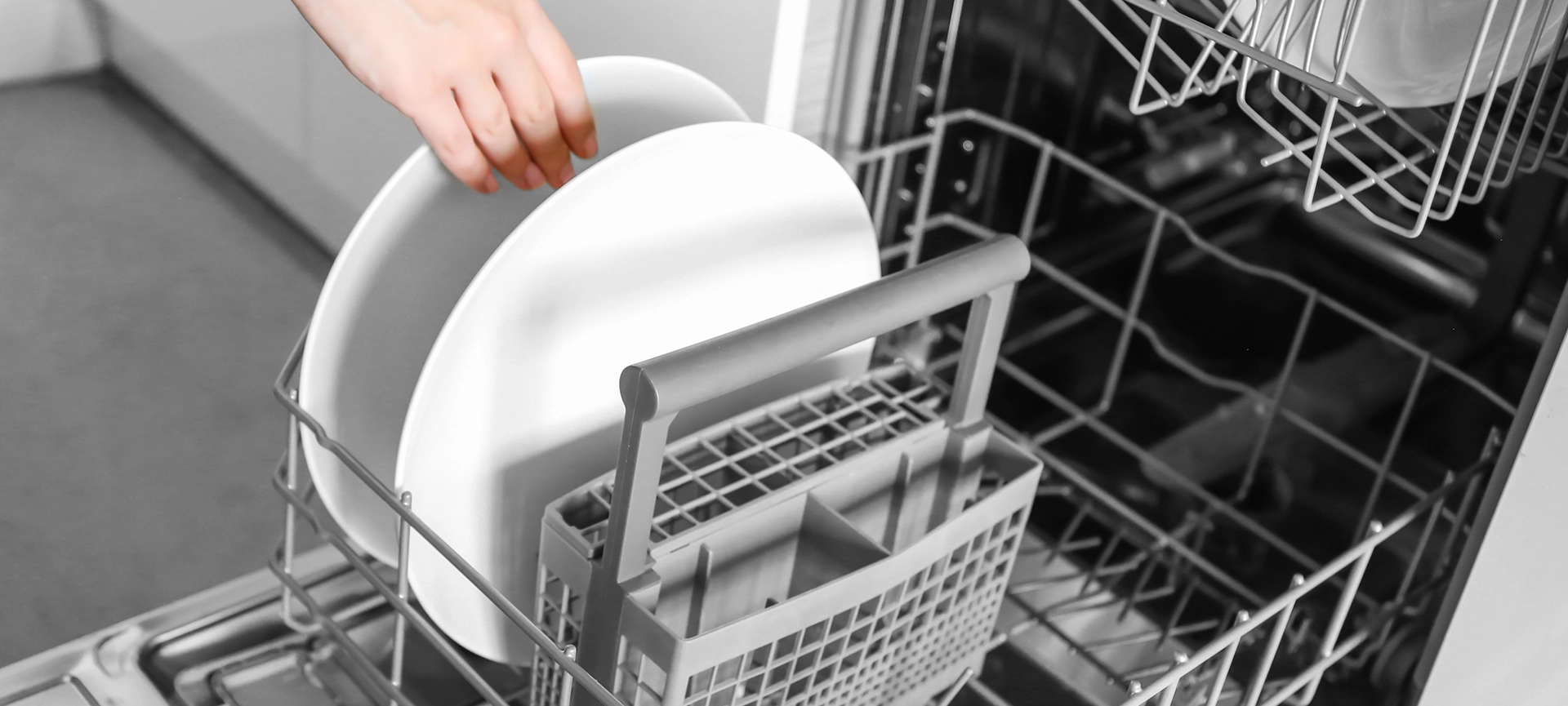Dishwashers are a true marvel of the modern world. Ultra-convenient and a breeze to use, they are meant to make your everyday life infinitely easier. All you have to do is load up your dishwasher with the grimy dishware and cutlery – no need to clean them manually.
However, like any other kitchen appliance, your dishwasher may malfunction at one point. This includes not releasing dishwasher soap, which means that the dishes will remain dirty after the wash cycle. Sounds familiar? Don’t worry, we are here to help. In this article, we run you through some of the reasons why your dishwasher is not dispensing soap – and what to do about it.
Reasons Why Your Dishwasher Won’t Release Soap and the Solution
Throughout its product life cycle, your dishwasher may encounter a gamut of issues. One of the most common ones, by far, is failing to dispense detergent as it normally should. It may sound hopeless, but this problem is relatively easy to remedy. If you are lucky, you probably won’t even need to seek the services of a repair professional.
By and large, troubleshooting your faulty dishwasher involves a lot of visual inspection. In case you notice some signs of damage on any of the parts (even something as simple as a chunk of plastic that has broken off), you will need to replace the component with a new one. Replacement parts of a dishwasher are relatively easy to find online or from your local hardware store. However, if you have an older model, you might have a harder time finding what you need. Your best bet would be to contact your product’s manufacturer.
1. Rinse Aid Cap
The rinse aid cap is a common reason why your dishwasher is not dispensing soap. That is, it is either loose or already damaged from the constant exposure to hot water. Fortunately, a bit of troubleshooting can confirm this. It is extremely easy to do and won’t require any tools or disassembly.
How to inspect a dishwasher rinse aid cap:
- Search for the rinse aid cap. It can be found on the inner door panel in most dishwasher models.
- Carefully unscrew the cap to inspect it. Be on the lookout for any indications of warping, melting, cracking, or discoloration.
- If you find any signs of damage, you will have to buy a replacement rinse aid cap.
2. Detergent Dispenser
As the name indicates, the dispenser is meant to discharge soap into the dishwasher during the cleaning cycle. Typically, it comes with two compartments – unsealed and sealed, which are used for pre-wash and the main wash cycle, respectively. Over time, the dispenser may become damaged with repeated use. It may also get clogged with soap and other residues, preventing it from functioning properly.
How to check a dishwasher detergent dispenser:
- Before anything else, make sure to disconnect the dishwasher from the power source first.
- Locate the soap dispenser. This hinged compartment is usually located on the inside of the dishwasher detergent door.
- Inspect the dishwasher dispenser and look out for any tell-tale signs of damage, including cracking and discoloration. If it is covered with detergent or other debris, wipe it clean with a damp microfiber cloth, making it easier to examine.
- If the dispenser appears to be damaged, you will have to replace it with a new component.
3. Soap Dispenser Door Spring and Hinge Pin
If the soap dispenser is in good condition, there might be some issues with the spring and hinge pin on the dispenser door. The hinge is operated by a tiny spring and a catch, both of which are responsible for opening the door at the right moment. If any of these parts have gone kaput, the detergent door may fall open or you may have to manually pry it open instead of relying on the spring.
How to examine a dishwasher soap dispenser door spring and hinge pin:
- Search for the spring and hinge pin. They are typically found on the interior side of the dishwasher door. In some models, they may be buried under some parts of the detergent dispenser. If so, you will have to remove these parts first.
- Examine the spring and the hinge pin. If they are broken, corroded, bent, or damaged, they will need to be replaced with newer components.
- Do they look fine and undamaged? If so, you will have to check if they are receiving the signal they need to open. The spring and hinge pin of a door can be operated by the bi-metal release, timer, or wax motor. With that said, refer to the owner’s manual to find more about how your specific dishwasher model works.
- After finding out which part is responsible for opening the soap dispenser door, you will want to check if that particular component is still functional. Read on to find out more.
4. Wax Motor
The more recent dishwasher models often use a wax motor to trigger the opening of the dispenser door hinge. If the wax motor is faulty, then the door to the dishwasher soap dispenser won’t open to blast the soiled dishes with detergent. To check if the motor is working as it should, you will have to test the wax motor for continuity using a multimeter.
How to test the continuity of a wax motor using a multimeter:
- Before getting started, disconnect the dishwasher from the power supply first.
- To test the wax motor, you will have to detach it from your appliance first. In most cases, you may have to detach the door panel (which is found close to the detergent dispenser cup) to access the wax motor. In any case, refer to the manual for specific instructions regarding your dishwasher model.
- Set the multimeter to the RX1 scale, and connect the probe to each terminal. If you get a reading of infinity, it indicates that the wax motor is, unfortunately, defective. If so, you will have to buy a replacement.
Related Article: Dishwasher Leaking: Top 7 Causes and How to Fix
5. Bi-Metal Release
Many older dishwasher models employ a bi-metal release instead of a wax motor to set off the dispenser door catch. Essentially, it is a mechanical device that relies on an electric current to free the dishwasher door spring and hinge. To determine if it is working properly, you want to check if it has continuity with the use of a multimeter.
How to test a bi-metal release with a multimeter:
- Begin by disconnecting the dishwasher from the power supply.
- Find the bi-metal release. It is typically located within the door assembly and very close to the detergent dispenser. Similar to a wax motor, you may also have to remove the inner or the outer door panel to get hold of the bi-metal release. Refer to the product’s manual for detailed instructions on how to do it.
- After locating the bi-metal release, the next step is to check its alignment. If the dispenser door is open, close it first. Afterwards, use the appropriate screwdriver to push in on the release until the dispenser cup door opens. In most cases, some minimal adjustment is all you need to make the bi-metal release functional again.
- If your dishwasher is still not dispensing soap, it is time to test the bi-metal release with a multimeter. Set your device to RX1. Carefully touch the probes to each terminal. If the multimeter displays an infinity reading, then your release is broken. If so, it will need to be replaced.
6. Timer
Some dishwasher models also free the soap dispenser catch mechanically – but with the use of a timer instead of a release. Sometime during the cleaning cycle, the dishwasher timer will activate a lever, prompting the release of the door spring and hinge. If there is no proper link between the dishwasher timer and the door hinge, then the release mechanism won’t work correctly. Again, a quick multimeter test will confirm if your timer is still operative.
How to assess a timer using a multimeter:
- As always, disconnect your unit from the power source before performing the test.
- Search for the dishwasher timer. It is usually found in the appliance’s control panel. Take note that you may have to remove some (or all) parts of the cabinet in order to access the timer.
- Carefully take out the timer from the unit.
- Does your timer have several contacts? If so, refer to the wiring diagram first to determine which electrical contacts you will need to test.
- Set your multimeter to RX1000 and touch the probes to the timer’s contacts or wires. The ideal reading for a dishwasher timer should fall anywhere between 2000 and 3500 ohms. However, the recommended range will vary from one model to another, so check your instruction’s manual to be sure.
- If you get a reading that is outside of the recommended value, you will have to replace the timer.
Related Article: Dishwasher Not Draining: Causes and How to Fix
Fix Your Dishwasher with These Easy Steps
A dishwasher is a must-have in every home. With repeated and long-term use, you can expect them to malfunction at one point or another. One of the most common issues you may encounter is the dishwasher failing to dispense detergent. With the steps we have detailed above, you should be able to fix the problem.
But if you still can’t figure out why your dishwasher is malfunctioning (or maybe you are uncomfortable replacing the damaged parts yourself), it is time to let repair service professionals do their job.








